Growing and Caring for Peace Lily Plants
Peace Lily plants, known scientifically as Spathiphyllum, are not just beautiful additions to your home; they’re also champions of air purification. Their glossy green leaves and stunning white blooms bring a touch of elegance to any space. If you’ve ever walked into a room and felt instantly relaxed, it might just be the soothing presence of a Peace Lily. But how do you ensure these lovely plants thrive in your care? In this comprehensive guide, we’ll dive into the essential aspects of growing and caring for Peace Lilies, from their ideal conditions to common issues you might encounter. So, let’s get started on this green journey together!
Originating from the tropical rainforests of Central and South America, Peace Lilies have adapted to thrive in low-light environments, making them perfect for indoor settings. These plants are not only visually appealing but also come with a host of benefits. They are renowned for their ability to filter out harmful toxins from the air, such as formaldehyde and benzene. Having a Peace Lily in your home is akin to having a natural air purifier working silently in the background. Plus, they’re relatively easy to care for, which makes them a favorite among both novice and experienced plant enthusiasts.
To ensure your Peace Lily flourishes, it’s crucial to provide the right growing conditions. These plants prefer indirect sunlight, warm temperatures, and high humidity. Think of it this way: Peace Lilies are like us—they thrive in a cozy, comfortable environment. Ideally, they should be kept in temperatures ranging from 65°F to 85°F (18°C to 29°C). If the air in your home is dry, consider placing a humidifier nearby or regularly misting the leaves to maintain humidity levels. A happy Peace Lily will reward you with vibrant blooms and lush foliage!
When it comes to lighting, Peace Lilies are quite forgiving. They do best in bright, indirect light. Imagine the sun filtering through the leaves of a tree—that’s the kind of light they love! However, direct sunlight can scorch their leaves, leading to unsightly brown patches. If you notice your Peace Lily stretching towards a light source, it’s a sign it’s not getting enough light. On the flip side, if it’s not blooming, it may be receiving too much shade.
One of the remarkable traits of Peace Lilies is their ability to adapt to low-light conditions. This makes them ideal for rooms with limited natural light, such as basements or offices. Even in these settings, they can still produce their beautiful white flowers, albeit less frequently. So, if you’re thinking of adding a touch of greenery to a dimly lit corner, a Peace Lily could be your perfect companion.
How can you tell if your Peace Lily isn’t getting enough light? Look for these signs:
- Slow Growth: If your plant seems stagnant, it may be craving more light.
- Few Blooms: A lack of flowers can indicate insufficient light.
- Stretched Leaves: If the leaves are elongated and reaching towards the light, it’s time to reposition your plant.
Maintaining the right temperature and humidity is essential for your Peace Lily’s health. They thrive in temperatures between 65°F and 85°F (18°C to 29°C). Sudden temperature drops or drafts can stress the plant, leading to wilting or leaf drop. Additionally, Peace Lilies enjoy humidity levels around 40-60%. If your home is particularly dry, especially in winter, consider using a pebble tray filled with water under the pot, or misting the leaves regularly to create a more favorable environment.
Watering your Peace Lily can be a bit of an art. These plants prefer to dry out a little between waterings, so it’s essential to check the soil moisture before adding more water. A good rule of thumb is to water when the top inch of soil feels dry to the touch. Overwatering can lead to root rot, which is a common issue for many plant parents. Fertilizing is also crucial; a balanced houseplant fertilizer applied every 6-8 weeks during the growing season will keep your Peace Lily healthy and thriving.
When watering your Peace Lily, aim for a thorough soak. Allow water to drain out of the bottom of the pot to ensure the roots receive adequate moisture. If you notice the leaves drooping, it’s likely a sign that your plant needs water. However, be cautious; drooping can also indicate overwatering, so always check the soil first!
For Peace Lilies, a balanced fertilizer with equal parts nitrogen, phosphorus, and potassium works wonders. Look for a formula like 20-20-20. During the growing season, typically from spring to early fall, fertilize every 6-8 weeks. This little boost will help your plant produce those stunning white blooms and maintain vibrant green foliage.
Like any plant, Peace Lilies can fall victim to pests and diseases. Common culprits include spider mites, aphids, and mealybugs. Regularly inspecting your plant can help catch issues early. If you spot any pests, consider using insecticidal soap or neem oil to treat the infestation. Additionally, watch for signs of leaf problems, such as browning tips or yellowing leaves, which can indicate overwatering or nutrient deficiencies.
Identifying pests early is key to keeping your Peace Lily healthy. Here’s how to spot some common pests:
- Spider Mites: Tiny, web-spinning creatures that thrive in dry conditions.
- Aphids: Small, soft-bodied insects that can cluster on new growth.
- Mealybugs: White, cotton-like pests that often hide in leaf axils.
Leaf problems can be a cry for help from your Peace Lily. Browning tips often indicate underwatering, while yellowing leaves can suggest overwatering or nutrient deficiencies. Assess your watering routine and consider adjusting your care to meet your plant’s needs.
Want to expand your Peace Lily collection? Propagation is a fun and rewarding process! You can propagate Peace Lilies through division or water propagation. Division is best done when repotting, while water propagation allows you to grow new plants from cuttings in a straightforward manner.
To divide a mature Peace Lily, carefully remove it from its pot and separate the root ball into smaller sections, ensuring each section has roots and leaves. Replant these sections in their own pots, and they’ll soon grow into healthy new plants!
For water propagation, take cuttings from a healthy plant and place them in a jar of water. Change the water weekly, and soon you’ll see roots developing. Once the roots are a few inches long, you can transfer them to soil.
Understanding the seasonal needs of your Peace Lily can significantly impact its health. During the winter, ensure it’s away from drafts and maintain consistent humidity levels. In spring, consider repotting and fertilizing to encourage new growth, as this is when Peace Lilies naturally thrive.
During the winter months, your Peace Lily may need a little extra care. Keep it in a warm spot, away from cold drafts, and reduce watering slightly as growth slows down. Ensure it still receives adequate light, even if it’s indirect.
As spring arrives, your Peace Lily will likely start to show signs of new growth. This is the perfect time to repot if it’s root-bound and to increase your fertilization schedule. Providing these extra nutrients will help your plant flourish as it enters its growing season.
Q: How often should I water my Peace Lily?
A: Water when the top inch of soil feels dry. Typically, this means watering every 1-2 weeks, but it can vary based on your home’s humidity and temperature.
Q: Why are the leaves of my Peace Lily turning yellow?
A: Yellow leaves can indicate overwatering, nutrient deficiencies, or insufficient light. Assess your care routine to identify the cause.
Q: Can I place my Peace Lily in direct sunlight?
A: It’s best to avoid direct sunlight, as it can scorch the leaves. Peace Lilies prefer bright, indirect light.
Q: How can I encourage my Peace Lily to bloom?
A: Ensure it receives adequate light, proper watering, and regular fertilization during the growing season to encourage blooming.

Understanding Peace Lily Basics
Peace Lily plants, scientifically known as Spathiphyllum, are not just any ordinary houseplants; they are a blend of beauty and functionality. Originating from the tropical regions of the Americas and Southeast Asia, these plants are celebrated for their stunning white blooms that resemble a peaceful flag, hence the name. But it’s not just their looks that make them popular; Peace Lilies are also renowned for their air-purifying qualities. They are capable of filtering out harmful toxins from the air, making them a fantastic addition to any indoor space.
One of the most striking features of the Peace Lily is its lush, dark green leaves that provide a beautiful contrast to its white flowers. These plants can grow up to three feet tall and can bloom multiple times throughout the year, especially when provided with the right care. Additionally, Peace Lilies are known for their resilience; they can adapt to various indoor conditions, making them an ideal choice for both novice and experienced plant enthusiasts.
But what are some of the specific benefits of having a Peace Lily in your home? Here's a quick rundown:
- Air Purification: Peace Lilies can remove harmful substances like formaldehyde, benzene, and carbon monoxide from the air.
- Low Maintenance: They require minimal care, making them perfect for busy individuals or those new to gardening.
- Humidity Regulation: These plants can help maintain moisture levels in the air, contributing to a healthier indoor environment.
- Beautiful Blooms: Their elegant white flowers add aesthetic value to any room.
However, it's essential to understand that while Peace Lilies are relatively easy to care for, they do have specific needs. Providing the right amount of light, water, and humidity is crucial to ensure they thrive. In the following sections, we will dive deeper into the ideal growing conditions for Peace Lilies, helping you create an environment where your plant can flourish.
In summary, Peace Lilies are more than just attractive houseplants; they offer numerous benefits that enhance our living spaces. Their ability to purify the air, combined with their low maintenance requirements, makes them a popular choice among plant lovers. So, whether you're looking to beautify your home or improve your indoor air quality, the Peace Lily is a fantastic option!

Ideal Growing Conditions
Creating the perfect environment for your Peace Lily plants is essential for their growth and overall health. These stunning houseplants thrive under specific conditions that mimic their natural habitat, which is typically the tropical rainforests of Central and South America. To ensure your Peace Lily flourishes, you'll need to pay close attention to several key factors: light, temperature, and humidity.
First and foremost, let's talk about light requirements. Peace Lilies prefer bright, indirect sunlight. If you can imagine a rainforest, the plants there receive filtered light through the canopy above. This is what your Peace Lily craves! Placing it near a window with sheer curtains can provide the ideal balance of light without the risk of scorching those beautiful green leaves. Too much direct sunlight can lead to leaf burn, which is something no plant parent wants to see.
Now, you might be wondering, "What if my home doesn't get a lot of natural light?" Well, don’t fret! Peace Lilies are remarkably adaptable. They can thrive in lower light conditions, although they may not bloom as frequently. If you notice your plant stretching towards the light or producing fewer flowers, it might be a sign that it’s time to move it to a brighter spot.
Next up is temperature. Peace Lilies love warmth, ideally thriving in temperatures between 65°F and 85°F (18°C - 29°C). They are not fans of the cold, so keeping them away from drafts or sudden temperature changes is crucial. Remember, these plants are tropical by nature; they don’t appreciate chilly nights or frosty windowsills!
Humidity also plays a significant role in the health of your Peace Lily. In their native environment, they bask in high humidity levels, often exceeding 50%. To replicate this, consider placing your Peace Lily in a bathroom or kitchen where humidity is naturally higher. Alternatively, you can mist the leaves regularly or set the pot on a tray filled with pebbles and water to create a microclimate. This not only keeps the plant happy but also enhances its overall appearance, making those glossy leaves shine!
To summarize, here are the ideal conditions for your Peace Lily:
| Condition | Ideal Range |
|---|---|
| Light | Bright, indirect sunlight |
| Temperature | 65°F - 85°F (18°C - 29°C) |
| Humidity | Above 50% |
By ensuring that your Peace Lily has the right amount of light, warmth, and humidity, you set the stage for vibrant growth and stunning blooms. Remember, the key to a thriving Peace Lily is to observe and adjust its environment as necessary. Happy growing!
- How often should I water my Peace Lily? Water your Peace Lily when the top inch of soil feels dry to the touch, typically every 1-2 weeks.
- Can Peace Lilies survive in low light? Yes, Peace Lilies can adapt to low light but may produce fewer flowers.
- What should I do if my Peace Lily leaves are turning yellow? Yellowing leaves can indicate overwatering or insufficient light; adjust your care accordingly.

Light Requirements
When it comes to growing Peace Lily plants, understanding their light requirements is crucial for ensuring they thrive and produce those stunning white blooms. These beautiful houseplants are known for their ability to adapt to various lighting conditions, but they do have preferences that can significantly affect their growth and health. Ideally, Peace Lilies enjoy bright, indirect sunlight. This means they should be placed near a window where they can receive filtered light, allowing them to bask in the sun's warmth without the harshness that can lead to leaf burn.
Direct sunlight is a big no-no for Peace Lilies. Think of it this way: just like you wouldn’t want to sit in the sun for hours without sunscreen, these plants can suffer when exposed to too much direct light. Instead, aim for a spot where they can receive dappled light or bright shade. If you notice your Peace Lily’s leaves starting to turn yellow or develop brown tips, it might be a sign that it's getting too much sun. On the flip side, if your plant is stretching towards the light or has fewer blooms, it may not be getting enough light.
Interestingly, Peace Lilies are quite adaptable. They can still bloom in low-light conditions, which makes them perfect for dimly lit rooms or offices. However, it's essential to recognize that while they can survive in these environments, their growth may slow down significantly. If you want your Peace Lily to flourish, consider placing it in a location where it can receive at least medium light for a few hours each day. This balance is key to keeping your plant vibrant and healthy.
To help you better understand how light affects Peace Lilies, here’s a quick overview:
| Light Condition | Effect on Peace Lily |
|---|---|
| Bright Indirect Light | Optimal growth and blooming |
| Low Light | Slower growth, fewer blooms |
| Direct Sunlight | Leaf burn, yellowing, and damage |
In summary, finding the right light balance is essential for your Peace Lily’s health. Monitor your plant closely, and don’t hesitate to adjust its location to meet its needs. Remember, a happy Peace Lily will reward you with its stunning blooms and lush foliage, brightening up your home with its presence!
- How much light does a Peace Lily need? Peace Lilies thrive in bright, indirect sunlight but can adapt to low-light conditions.
- Can Peace Lilies survive in low light? Yes, they can survive, but their growth may slow down, and they may produce fewer flowers.
- What happens if a Peace Lily gets too much light? Too much direct sunlight can cause leaf burn, yellowing, and damage to the plant.

Low Light Adaptation
Peace Lilies are remarkable plants that have an incredible ability to adapt to low-light conditions. This makes them a perfect choice for those of us who live in spaces with limited natural light, like apartments or offices. Imagine a bright, sunny day outside while your Peace Lily thrives in the cozy corner of your dimly lit room, almost as if it's saying, "I can make it work!" This resilience is one of the reasons why Peace Lilies have gained such popularity among houseplant enthusiasts.
When it comes to low light adaptation, these plants have evolved to survive in the understory of tropical rainforests, where sunlight is filtered through the canopy above. They possess broad, dark green leaves that maximize light absorption, allowing them to harness whatever little light is available. If you’ve ever seen a Peace Lily bloom in a less-than-ideal light setting, you know just how impressive their adaptability can be!
However, it’s essential to note that while Peace Lilies can thrive in low light, they still require some indirect sunlight to produce those stunning white blooms. If you place your plant in a completely dark area, you might find it struggling to grow. So, what are the signs that your Peace Lily is happy in low light? Here are a few indicators:
- Glossy Leaves: Healthy Peace Lily leaves will appear shiny and vibrant.
- Steady Growth: If your plant is growing steadily, even in low light, it’s a good sign!
- Blooming: Occasional blooming indicates that your Peace Lily is content.
On the flip side, if you notice your Peace Lily becoming leggy, with long stems and sparse leaves, it might be a sign that it’s stretching for light. This is a common issue in low-light environments and can be easily remedied by moving your plant closer to a light source or providing some artificial light. Remember, even the most adaptable plants have their limits!
In summary, Peace Lilies are champions of low light adaptation, making them a fantastic choice for indoor gardening. Just keep an eye on their growth and adjust their positioning as needed, and you’ll be rewarded with beautiful foliage and those elegant blooms that brighten up any space. So, go ahead and give your Peace Lily a cozy spot in your home; it just might surprise you with its resilience!
Q: Can Peace Lilies survive in complete darkness?
A: No, while Peace Lilies can adapt to low light, they still need some indirect light to thrive and bloom.
Q: How often should I rotate my Peace Lily?
A: It's a good idea to rotate your Peace Lily every few weeks to ensure even light exposure on all sides.
Q: What if my Peace Lily isn’t blooming?
A: If your Peace Lily isn’t blooming, it may not be getting enough light or nutrients. Consider moving it to a brighter spot or fertilizing it.

Signs of Insufficient Light
When it comes to nurturing your Peace Lily, understanding the signs of insufficient light is crucial for their well-being. These beautiful plants are known for their lush green leaves and stunning white blooms, but they can become quite unhappy if they don't receive enough light. So, how do you know if your Peace Lily is feeling a bit light-deprived?
One of the first indicators is slow growth. If you notice that your Peace Lily isn't growing as vigorously as it used to, it might be time to reassess its lighting conditions. A healthy Peace Lily should show signs of new leaves and flowers, so if your plant seems stagnant, it could be waving a little white flag of distress.
Another telltale sign is the reduction in blooms. Peace Lilies are known for their beautiful flowers, but if your plant is not producing blooms or if the blooms are smaller than usual, it could be a sign that it's not getting enough light. Think of it like a flower needing sunlight to thrive; without it, the blooms simply won't happen.
Additionally, you might notice that the leaves of your Peace Lily are turning yellow. While yellowing leaves can indicate various issues, insufficient light is a common culprit. In contrast, if the leaves are stretching out and becoming leggy, that's another sign that your plant is reaching for more light. It's almost as if your Peace Lily is trying to tell you, “Hey, I need some sunshine over here!”
To help you identify these signs more easily, here's a quick summary:
| Sign | What It Indicates |
|---|---|
| Slow Growth | Insufficient light may be hindering growth. |
| Reduced Blooms | Not enough light for flowering. |
| Yellowing Leaves | Could indicate light deficiency. |
| Leggy Growth | Plant is stretching towards light. |
By keeping an eye out for these signs, you can adjust your Peace Lily's environment accordingly. If you suspect your plant is not getting enough light, consider moving it to a brighter location or supplementing with artificial light. Remember, a happy Peace Lily is a blooming Peace Lily!
- How much light do Peace Lilies need? Peace Lilies thrive in bright, indirect sunlight. They can adapt to low-light conditions but will bloom less.
- Can I use grow lights for my Peace Lily? Yes! Grow lights can be a great option, especially if natural light is limited.
- What should I do if my Peace Lily has yellow leaves? Assess the light conditions first, then check for overwatering or pests.
- How often should I rotate my Peace Lily? Rotating your Peace Lily every few weeks can help ensure even growth and exposure to light.
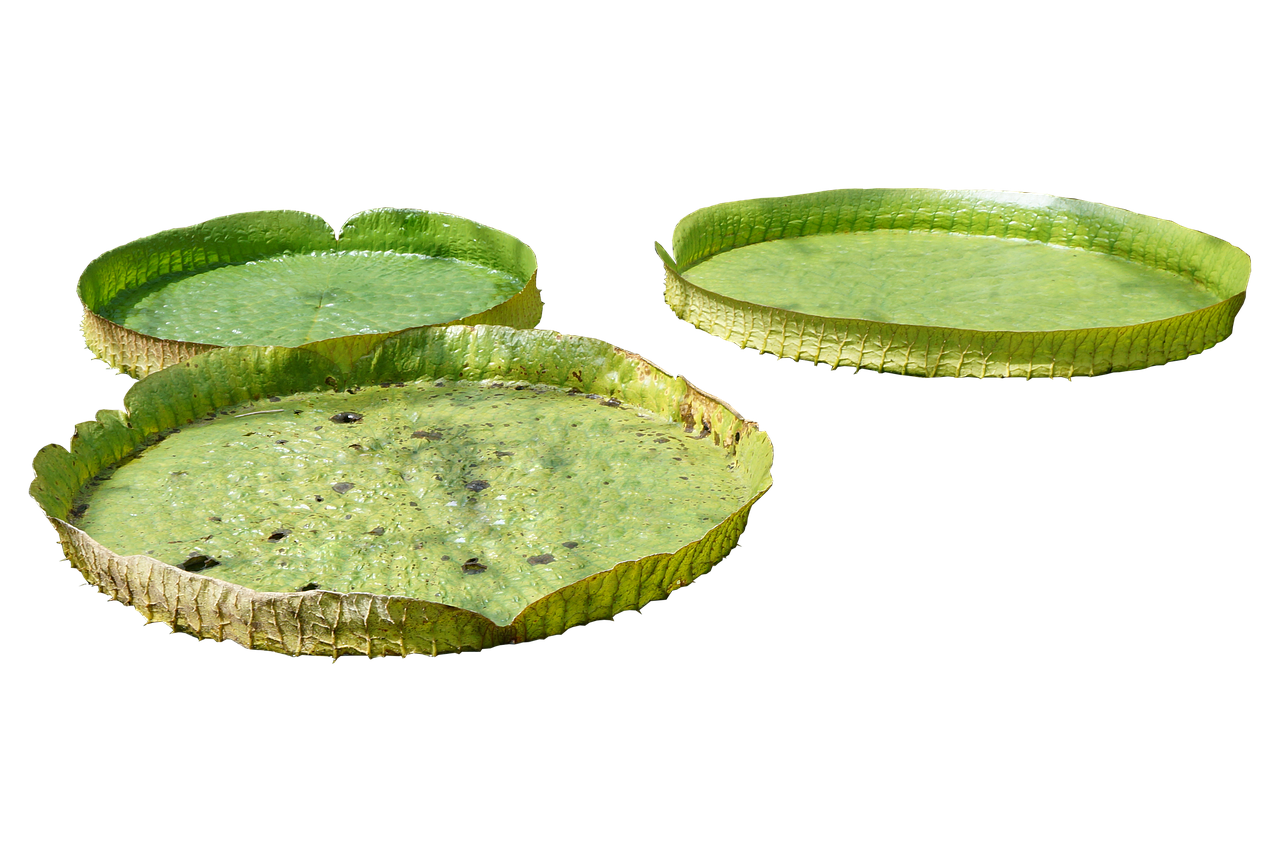
Temperature and Humidity
When it comes to growing Peace Lily plants, understanding their temperature and humidity preferences is crucial for ensuring vibrant growth and beautiful blooms. These tropical plants are native to the lush rainforests of Central and South America, which means they thrive in conditions that mimic their natural habitat. Ideally, Peace Lilies prefer a temperature range of 65°F to 85°F (18°C to 29°C). This range allows them to flourish, promoting healthy foliage and stunning white flowers that can brighten up any room.
However, it's important to note that Peace Lilies can tolerate slightly cooler temperatures down to about 50°F (10°C), but anything below this can cause stress and hinder growth. If you notice your plant experiencing drooping leaves or slowed growth, it might be time to check the temperature of its surroundings. So, how do you keep your Peace Lily cozy? Simple! Place it away from drafty windows or doors, and avoid exposing it to cold air from air conditioning units.
Humidity is another vital factor for the well-being of your Peace Lily. These plants thrive in environments with a humidity level of around 40% to 60%. If your home tends to be on the drier side, especially during winter months, consider using a humidifier or placing a tray of water with pebbles underneath your pot to increase moisture in the air. This not only helps your Peace Lily but also benefits other plants you may have at home.
In contrast, too much humidity can lead to issues such as root rot or fungal infections. Therefore, maintaining a balance is key. If you notice condensation on the leaves or a musty smell around the plant, it's time to evaluate your humidity levels. A quick and effective way to monitor humidity is by using a hygrometer, which can provide real-time readings and help you adjust your care routine accordingly.
In summary, keeping your Peace Lily in a warm, humid environment will help it thrive and showcase its stunning blooms. Remember, these plants are quite forgiving, so even if you slip up occasionally, they often bounce back. Just keep an eye on temperature fluctuations and humidity levels, and your Peace Lily will reward you with its beautiful presence for years to come.
- What should I do if my Peace Lily's leaves start to turn yellow? Yellowing leaves can indicate overwatering or insufficient light. Check your watering schedule and make sure your plant is receiving adequate indirect sunlight.
- Can Peace Lilies survive in low light? Yes, Peace Lilies can adapt to low-light conditions, but they may not bloom as frequently. They still need some light to thrive, so consider placing them in a spot with filtered light.
- How often should I water my Peace Lily? Water your Peace Lily when the top inch of soil feels dry to the touch. Typically, this means watering every 1-2 weeks, but it can vary based on your home's humidity and temperature.
- Is it safe to keep Peace Lilies around pets? Peace Lilies are mildly toxic to pets if ingested. It's best to keep them out of reach of curious cats and dogs.

Watering and Fertilization
When it comes to nurturing your Peace Lily, understanding the nuances of watering and fertilization is essential for ensuring vibrant growth and stunning blooms. These plants thrive in a delicate balance of moisture and nutrients, and getting this balance right can make all the difference. So, how do you keep your Peace Lily happy and healthy? Let's dive in!
First and foremost, watering your Peace Lily is not just about splashing some water on the soil and calling it a day. It’s about creating a routine that respects the plant's natural needs. Peace Lilies prefer their soil to be consistently moist but not soggy. A good rule of thumb is to check the top inch of the soil; if it feels dry, it’s time to water. On the flip side, if it’s still damp, hold off for a few days. Overwatering can lead to root rot, which is a surefire way to send your beloved plant to an early grave. Trust me, nobody wants that!
In terms of frequency, during the growing season—typically spring and summer—your Peace Lily may need water once a week. However, as the temperatures drop in the fall and winter, you can reduce the frequency to every two weeks. Remember, every home is different, and factors like humidity and temperature can affect how quickly the soil dries out. So, always keep an eye on your plant’s condition.
Now, let's talk about fertilization. While Peace Lilies aren’t heavy feeders, they do appreciate a little boost from time to time. Using a balanced, water-soluble fertilizer diluted to half strength is the way to go. You can fertilize your Peace Lily every 6 to 8 weeks during the growing season. Just make sure to avoid fertilizing during the winter months when the plant is resting. This is akin to trying to wake someone up from a deep sleep—it's just not going to be pretty!
Here’s a quick reference table to help you remember the watering and fertilization schedule for your Peace Lily:
| Season | Watering Frequency | Fertilization Frequency |
|---|---|---|
| Spring | Once a week | Every 6 weeks |
| Summer | Once a week | Every 6 weeks |
| Fall | Every 1-2 weeks | Every 8 weeks |
| Winter | Every 2 weeks | None |
Lastly, always remember to use room temperature water when watering your Peace Lily. Cold water can shock the roots, while hot water can cook them. The goal is to provide a cozy environment that mimics their natural habitat. With the right watering and fertilization techniques, your Peace Lily will reward you with lush green leaves and those stunning white blooms that can brighten any room. So, roll up your sleeves, grab that watering can, and get ready to become the ultimate Peace Lily caretaker!
- How often should I water my Peace Lily? Water your Peace Lily when the top inch of soil feels dry, typically once a week during the growing season.
- Can I use any fertilizer for my Peace Lily? It's best to use a balanced, water-soluble fertilizer diluted to half strength.
- What signs indicate that my Peace Lily is overwatered? Yellowing leaves and a mushy stem are common signs of overwatering.
- Is it necessary to fertilize during winter? No, it's best to avoid fertilization during the winter months when the plant is in its resting phase.

Watering Techniques
When it comes to watering your Peace Lily, striking the right balance is crucial for its health and vibrancy. Overwatering can lead to root rot, while underwatering can cause the plant to wilt and lose its beautiful blooms. So, how do we navigate this delicate dance of hydration? First, it's essential to understand the moisture needs of your Peace Lily. A good rule of thumb is to check the soil regularly. Stick your finger about an inch into the soil; if it feels dry, it's time to water. If it’s still moist, hold off for a bit longer.
One effective method is to use the bottom watering technique. This involves placing your Peace Lily’s pot in a basin of water and allowing the roots to soak up moisture through the drainage holes. This method not only hydrates the plant evenly but also prevents water from sitting on the leaves, which can cause fungal issues. Aim to let the plant absorb water for about 30 minutes before removing it from the basin. This way, you ensure the roots are well-hydrated without drowning them.
Additionally, consider the type of water you are using. Peace Lilies are sensitive to chemicals found in tap water, such as chlorine and fluoride. Whenever possible, use distilled or rainwater. If you must use tap water, let it sit for 24 hours to allow the chemicals to dissipate before watering your plant. This simple step can make a significant difference in your Peace Lily's overall health.
Moreover, the frequency of watering can vary based on the season. In the warmer months, you might find yourself watering your Peace Lily more often, as it actively grows and uses up moisture quickly. However, during the winter months, when growth slows down, you can reduce the frequency. Remember, it's not just about how much water you give, but also about how you give it. Watering in the morning allows the plant to absorb moisture throughout the day, while evening watering can leave the leaves damp overnight, increasing the risk of fungal issues.
In summary, mastering the art of watering your Peace Lily involves a combination of checking soil moisture, using effective techniques like bottom watering, choosing the right type of water, and adjusting your watering schedule according to the season. By following these simple yet effective methods, you can ensure your Peace Lily remains a stunning centerpiece in your home, thriving and blooming beautifully.
- How often should I water my Peace Lily? It’s best to check the soil moisture regularly. Water when the top inch of soil feels dry, typically every 1-2 weeks.
- Can I use tap water for my Peace Lily? While you can use tap water, it's better to use distilled or rainwater to avoid chemicals that may harm the plant.
- What are the signs of overwatering? Yellowing leaves and a mushy stem are common signs of overwatering in Peace Lilies.
- Is bottom watering better than top watering? Yes, bottom watering helps ensure even moisture distribution and reduces the risk of water sitting on the leaves.
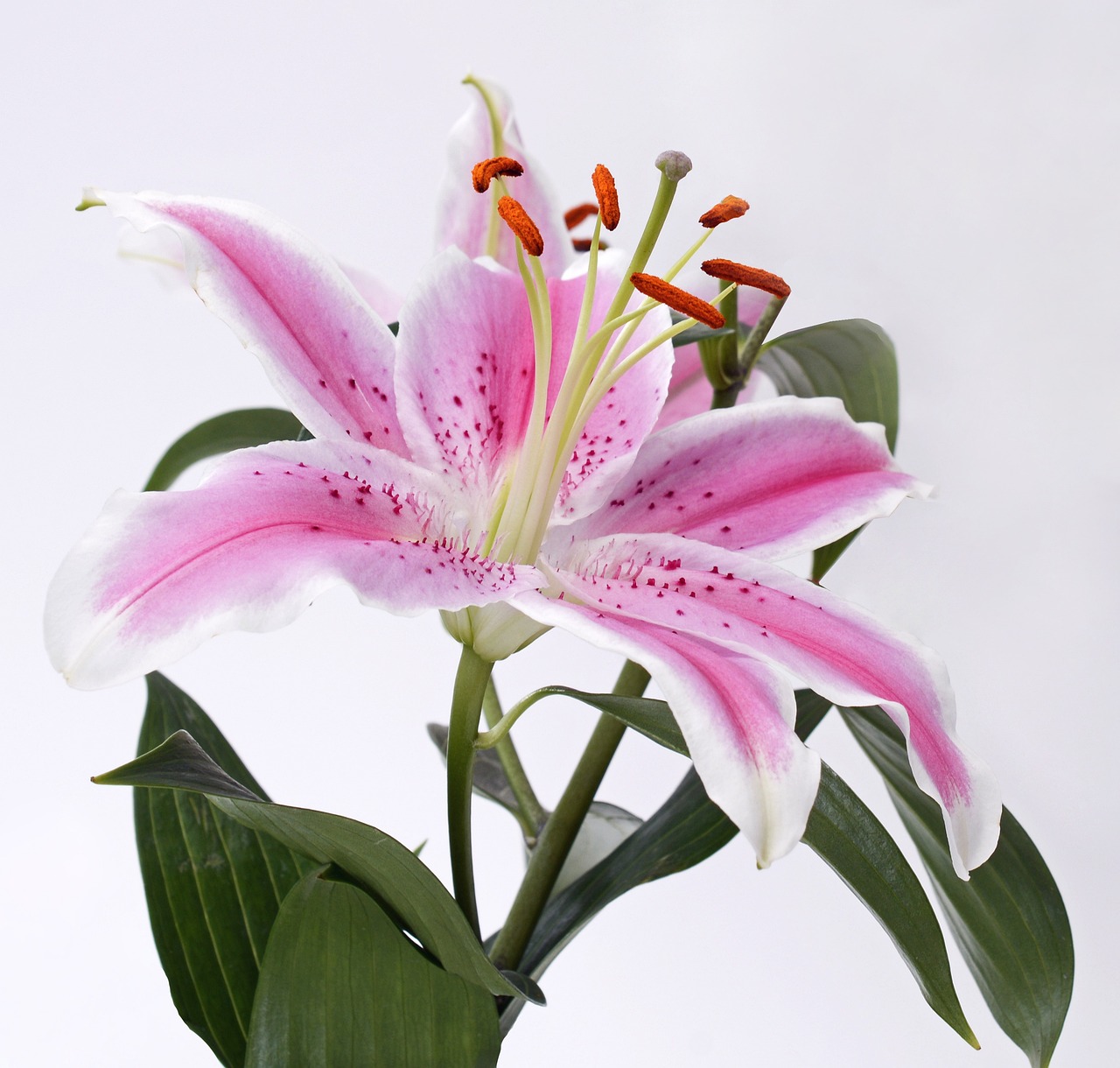
Choosing the Right Fertilizer
When it comes to nurturing your Peace Lily, selecting the right fertilizer is crucial for promoting vibrant growth and stunning blooms. Peace Lilies are not particularly heavy feeders, but they do appreciate a little extra love during their growing season, which typically spans from spring to early fall. To ensure your plant thrives, look for a balanced, water-soluble fertilizer that has equal parts nitrogen, phosphorus, and potassium—often labeled as a 20-20-20 formula. This balanced approach provides the essential nutrients necessary for overall plant health.
In addition to the N-P-K ratio, consider choosing a fertilizer that also contains micronutrients such as magnesium and iron. These are vital for the lush green foliage and the striking white blooms that Peace Lilies are known for. You can either opt for a commercial fertilizer specifically formulated for houseplants or create your own organic mix using compost or worm castings, which can enrich the soil naturally.
When applying fertilizer, timing is everything. Generally, you should fertilize your Peace Lily every 6 to 8 weeks during the growing season. However, be cautious not to over-fertilize, as this can lead to salt build-up in the soil, which may harm your plant. If you notice browning leaf tips or a white crust on the soil surface, it might be a sign that you need to flush the soil with water to remove excess salts.
Here’s a quick reference table for your fertilizer needs:
| Type of Fertilizer | Application Frequency | Notes |
|---|---|---|
| Balanced Liquid Fertilizer (20-20-20) | Every 6-8 weeks | Ideal for overall health and blooms |
| Organic Compost | Every 2-3 months | Slow-release nutrients, improves soil structure |
| Worm Castings | Every 2-3 months | Rich in nutrients, promotes beneficial microbes |
Lastly, remember that every plant is unique. Observing your Peace Lily's response to fertilization will guide you in finding the perfect balance. If your plant is thriving, you’re likely doing everything right. But if you notice any signs of distress, it may be time to reassess your fertilization strategy. Happy growing!
Q: How often should I fertilize my Peace Lily?
A: During the growing season (spring to early fall), fertilize every 6 to 8 weeks for optimal health.
Q: Can I use any type of fertilizer on my Peace Lily?
A: It's best to use a balanced liquid fertilizer with equal parts nitrogen, phosphorus, and potassium, or organic options like compost and worm castings.
Q: What are the signs of over-fertilizing?
A: Look for browning leaf tips or a white crust on the soil surface, which indicate salt build-up.
Q: Is it necessary to fertilize during the winter?
A: No, Peace Lilies typically do not need fertilizing during their dormant season in winter.

Common Pests and Problems
Peace Lily plants, while generally resilient and easy to care for, can sometimes fall victim to a variety of pests and problems. Understanding these issues is crucial for maintaining the health and vibrancy of your beloved plant. One of the most common pests that can affect Peace Lilies is the spider mite. These tiny, almost invisible creatures thrive in dry conditions and can cause significant damage by sucking the sap from the leaves. If you notice tiny webbing on your plant or speckled leaves, it’s time to take action!
Another pest to watch out for is the aphid. These small, soft-bodied insects can cluster on new growth and stems, leading to distorted leaves and stunted growth. To combat these pests, a gentle spray of water can often dislodge them, or you might consider using insecticidal soap as a more targeted treatment. Always remember to check the undersides of the leaves, as many pests like to hide there.
In addition to pests, you may encounter various leaf problems that serve as indicators of your Peace Lily's health. For instance, browning tips on the leaves can signal either overwatering or underwatering. If the soil is consistently soggy, the roots may be rotting, leading to this unsightly browning. Conversely, if the soil is too dry, the plant will also show signs of stress. It’s essential to find a balance and monitor your watering routine.
Similarly, yellowing leaves can be a sign of nutrient deficiency or improper watering. If your Peace Lily's leaves are turning yellow, it might be time to check your fertilization schedule or evaluate your watering habits. A good rule of thumb is to ensure the top inch of soil is dry before watering again. This approach keeps your plant happy and healthy, ensuring it continues to produce those stunning white blooms.
To help you better understand how to deal with these common issues, here’s a quick reference table:
| Problem | Symptoms | Solutions |
|---|---|---|
| Spider Mites | Webbing, speckled leaves | Increase humidity, spray with water or insecticidal soap |
| Aphids | Distorted leaves, clusters on stems | Wash off with water, use insecticidal soap |
| Browning Tips | Dry, crispy leaf edges | Check watering routine, avoid overwatering |
| Yellowing Leaves | Discolored leaves, poor growth | Evaluate fertilization and watering habits |
By being vigilant and proactive, you can ensure that your Peace Lily remains a stunning addition to your home. Regularly inspecting your plant for pests and symptoms of distress can save you a lot of trouble down the road. Remember, prevention is always better than cure! So, keep your plant in optimal conditions and enjoy the beauty it brings to your space.
Q: How can I prevent pests from infesting my Peace Lily?
A: Regularly inspecting your plant and maintaining good air circulation can help prevent pests. Additionally, keeping the humidity levels up can deter spider mites.
Q: What should I do if my Peace Lily has root rot?
A: If you suspect root rot, carefully remove the plant from its pot and inspect the roots. Trim away any black, mushy roots and repot the plant in fresh, well-draining soil.
Q: How often should I check for pests?
A: It’s a good idea to check your Peace Lily at least once a week for any signs of pests or distress. Early detection is key to effective treatment!

Recognizing Pests
When it comes to caring for your beloved Peace Lily, one of the most crucial aspects is being vigilant about pests. These little intruders can wreak havoc on your plant's health if not addressed promptly. The most common pests that target Peace Lilies include spider mites, aphids, and mealybugs. Each of these pests has its own set of characteristics, and knowing how to recognize them can save your plant from serious damage.
Spider mites are tiny arachnids that thrive in dry conditions. They often appear as tiny specks on the leaves, and if you look closely, you might notice fine webbing between the leaves and stems. A sure sign of their presence is when the leaves start to look dusty or speckled, leading to a decline in your plant's overall vitality. On the other hand, aphids are small, soft-bodied insects that cluster on the undersides of leaves and stems. They can be green, black, or even white, and they suck the sap from your plant, which can stunt growth and cause leaf curling. If you notice a sticky residue on your leaves or a black sooty mold, it’s likely a sign of aphid infestation.
Another pest to keep an eye out for is mealybugs. These pests look like tiny cottony masses on your plant. They tend to hide in the leaf axils and can be challenging to spot at first. If you notice your Peace Lily leaves turning yellow or wilting, mealybugs could be the culprit. Their presence can also lead to a sticky substance on the leaves, similar to what aphids produce. To effectively manage these pests, it’s essential to inspect your plant regularly, especially the undersides of leaves and the areas where leaves meet the stem.
If you do find pests on your Peace Lily, don’t panic! There are several effective methods to control them. A gentle spray of water can dislodge many pests, while insecticidal soap or neem oil can effectively eliminate infestations. Always remember to follow the instructions on any product you choose to ensure the safety of your plant. Keeping your Peace Lily healthy through proper care will also make it less susceptible to pests.
- How can I prevent pests on my Peace Lily? Regularly inspecting your plant, maintaining proper humidity levels, and ensuring good airflow can help prevent infestations.
- What should I do if I find pests on my Peace Lily? Remove the pests manually if possible, and consider using insecticidal soap or neem oil for larger infestations.
- Can pests harm my Peace Lily permanently? If caught early, most pest problems can be resolved without permanent damage. However, severe infestations can lead to significant stress on the plant.
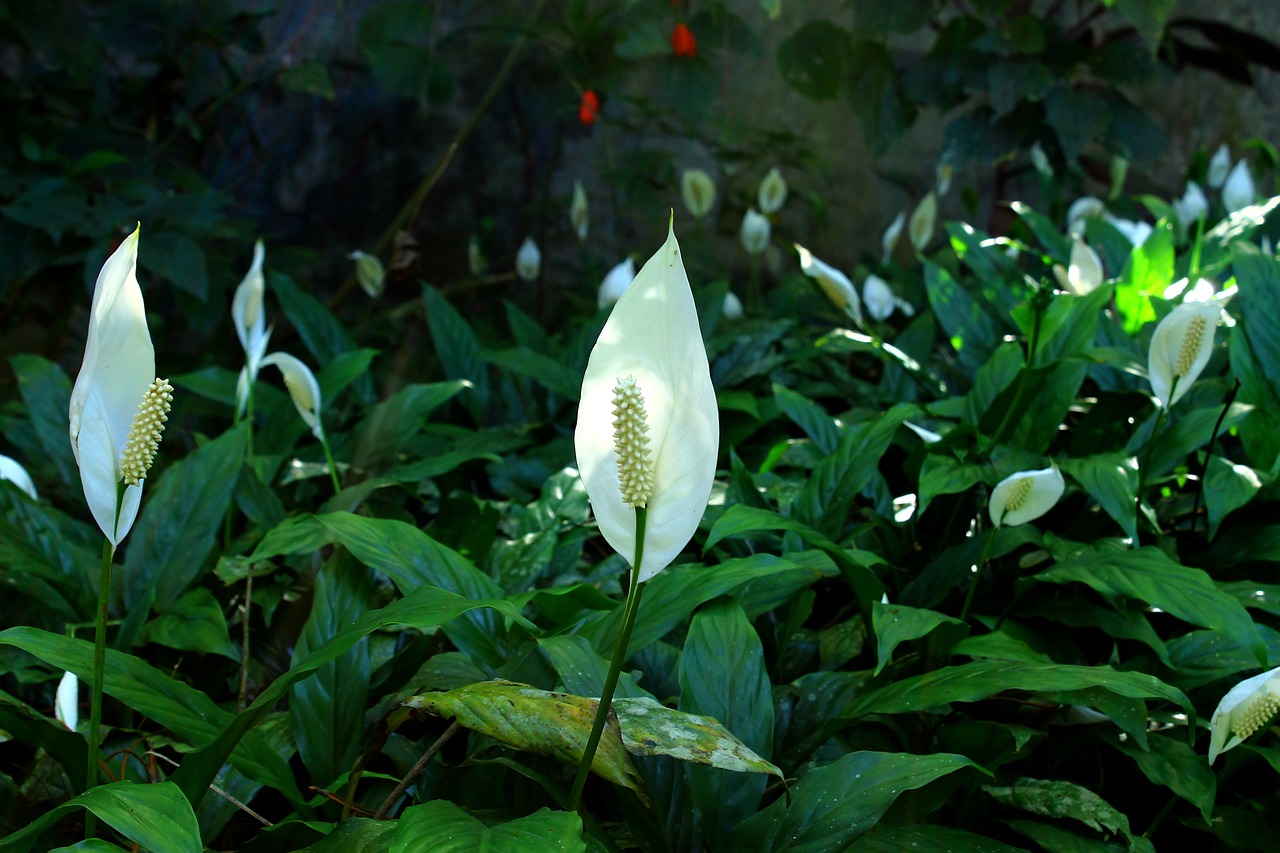
Dealing with Leaf Issues
When it comes to caring for your Peace Lily, one of the most common challenges you'll face is dealing with leaf issues. These problems can often be the first signs that your plant is not thriving as it should. Understanding the various leaf issues, such as browning tips and yellowing leaves, is crucial for maintaining the health of your Peace Lily. Each of these symptoms can indicate different underlying problems, and addressing them promptly can make all the difference in your plant's vitality.
Browning tips on your Peace Lily can be particularly concerning. This issue often arises due to low humidity levels or inconsistent watering practices. Peace Lilies thrive in humid environments, so when the air is too dry, the leaf tips can start to brown and curl. Additionally, over-fertilization can also lead to this problem, as excess salts build up in the soil and affect the plant's ability to absorb water properly. To combat this, consider misting your plant regularly or placing a humidifier nearby. If you suspect over-fertilization, a good practice is to flush the soil with water to help remove any excess salts.
On the other hand, yellowing leaves can be a sign of a few different issues. Most commonly, it indicates that your Peace Lily is either overwatered or underwatered. If the leaves are turning yellow and feel mushy, it’s likely a sign of overwatering. You might want to check the soil; if it’s soggy, it’s time to let it dry out a bit before watering again. Conversely, if the leaves are yellowing but the soil feels dry, your plant may be thirsty and in need of water. Another reason for yellowing leaves could be a lack of nutrients, so ensuring that you’re fertilizing your plant appropriately can help prevent this issue.
To help you better understand these common leaf issues, here's a simple table that summarizes the symptoms and possible solutions:
| Leaf Issue | Symptoms | Possible Solutions |
|---|---|---|
| Browning Tips | Dry, crispy leaf edges | Increase humidity; avoid over-fertilizing |
| Yellowing Leaves | Leaves turning yellow, possibly mushy | Check watering schedule; ensure proper fertilization |
In addition to these common issues, it's essential to monitor your Peace Lily for any signs of pest infestations, which can also manifest through leaf problems. Pests like spider mites and aphids can cause leaves to discolor or develop spots. If you notice any unusual spots or webbing on your plant, it's time to take action. A gentle wash with soapy water can often help eliminate these pests, but for more severe infestations, you may need to resort to insecticidal soap or neem oil.
Ultimately, the key to dealing with leaf issues in your Peace Lily is observation and timely intervention. Regularly inspecting your plant and adjusting care routines based on its needs will help you keep your Peace Lily healthy and blooming beautifully. Remember, a little attention goes a long way in ensuring your plant thrives!
- What causes browning tips on Peace Lily leaves? Browning tips can be caused by low humidity, inconsistent watering, or over-fertilization.
- How can I fix yellowing leaves? Yellowing leaves can indicate over or underwatering. Adjust your watering schedule accordingly.
- Are pests a concern for Peace Lilies? Yes, pests like spider mites and aphids can affect your Peace Lily. Regular checks and treatments can help manage infestations.

Propagation Methods
When it comes to expanding your collection of Peace Lily plants, understanding the various is essential. Not only does propagation allow you to create new plants, but it also offers a rewarding experience that deepens your connection with these beautiful houseplants. The two most common methods for propagating Peace Lilies are division and water propagation. Each technique has its unique advantages and can be tailored to fit your gardening style and space.
Starting with division, this method is particularly effective when your Peace Lily has outgrown its pot or is becoming too dense. To divide a mature plant, gently remove it from its pot, being careful not to damage the roots. Look for natural divisions in the root ball, and use a clean, sharp knife to separate the plant into smaller sections. Each section should have a healthy root system and at least a few leaves. Once divided, repot each new section into its own container filled with fresh potting soil. This method not only rejuvenates the original plant but also gives you several new plants to nurture.
On the other hand, water propagation is a fantastic way to grow new Peace Lilies from cuttings. This method is straightforward and requires minimal materials. To start, take a healthy cutting from the parent plant, ensuring it has a few leaves and a node. Place the cutting in a glass of water, making sure that the node is submerged while the leaves remain above the waterline. Position the glass in a spot with indirect sunlight, and change the water every few days to keep it fresh. Within a few weeks, you should see roots beginning to form. Once the roots are a few inches long, you can transfer the cutting into soil, where it will continue to grow into a vibrant new plant.
It's fascinating to see how these methods can yield beautiful results, but it's also essential to keep a few tips in mind. For both division and water propagation, ensure that your parent plant is healthy and well-cared-for before taking cuttings or dividing. This will increase the chances of successful propagation. Additionally, be patient! Plants take time to adjust and grow, so don't be discouraged if you don't see immediate results.
To summarize the key points of these propagation methods, here's a quick overview:
| Method | Steps | Benefits |
|---|---|---|
| Division |
|
Rejuvenates parent plant, creates multiple new plants |
| Water Propagation |
|
Simple, visual process, encourages root growth |
By mastering these propagation methods, you can enjoy the beauty of Peace Lilies in various spots around your home. Whether you choose to divide or propagate in water, both methods offer a delightful way to expand your green family. So, roll up your sleeves, get your hands dirty, and enjoy the journey of nurturing new life!
Q: How often can I propagate my Peace Lily?
A: You can propagate your Peace Lily whenever it shows signs of being root-bound or if you wish to expand your collection. Typically, this is done every 1-2 years.
Q: Can I propagate Peace Lilies from leaf cuttings?
A: Unfortunately, leaf cuttings alone do not propagate successfully. It's best to use sections with nodes for successful growth.
Q: What should I do if my propagated cutting doesn't grow roots?
A: Ensure that the cutting is in a warm spot with indirect light and that the water is changed regularly. If it still doesn't root, it may not have been healthy enough to begin with.
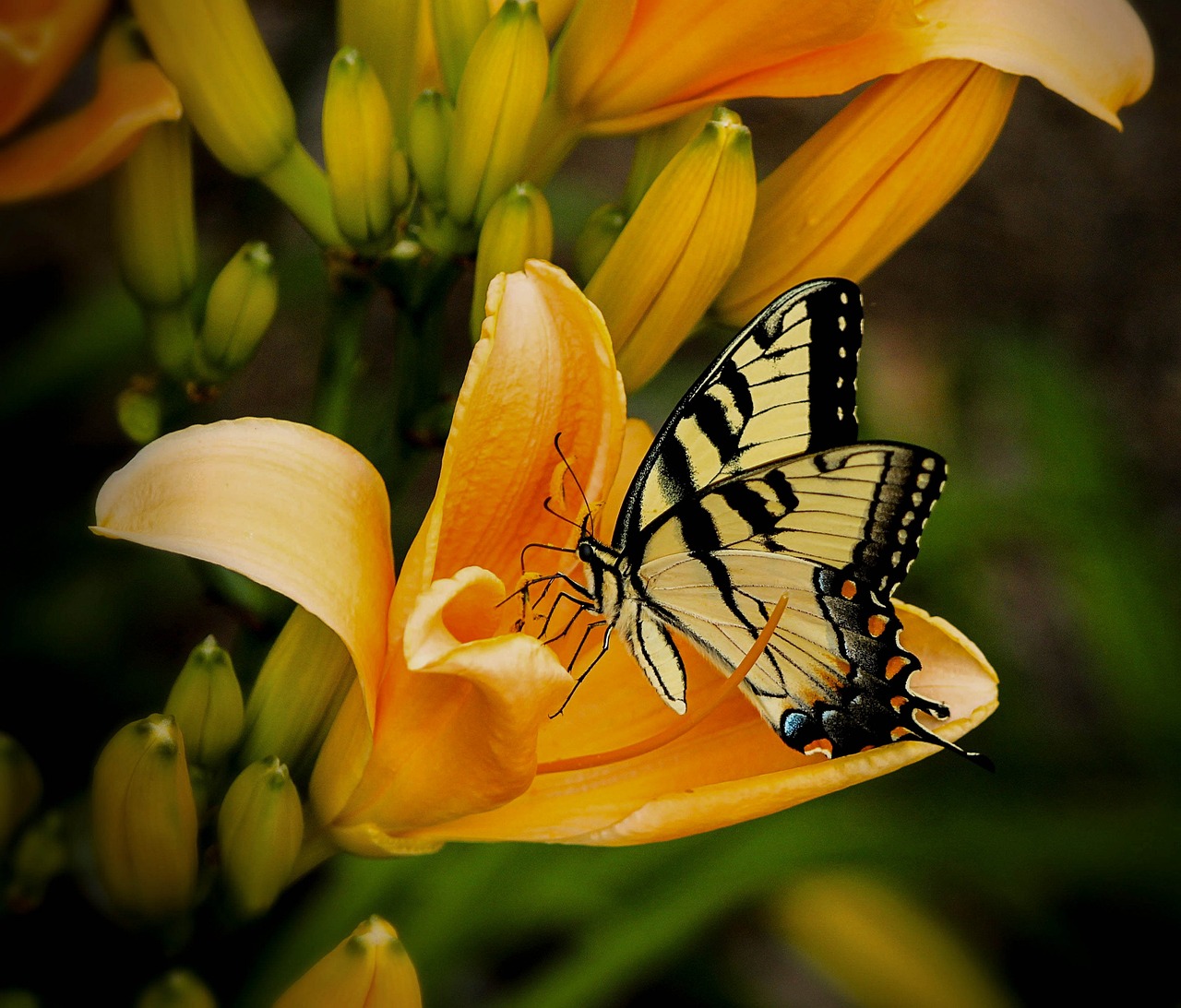
Dividing Mature Plants
Dividing mature Peace Lily plants is not just a practical way to propagate your collection; it can also rejuvenate the parent plant, promoting healthier growth and more vibrant blooms. Imagine your Peace Lily as a family tree; from a single trunk, you can create multiple branches, each capable of thriving on its own. This process is best done every couple of years, typically in the spring when the plant is actively growing. So, how do you go about it?
First, you'll want to ensure your plant is healthy and well-established. A mature Peace Lily usually has a robust root system and multiple stems. Start by gently removing the plant from its pot. This can be done by holding the base of the plant and carefully pulling it out, ensuring not to damage the roots. If the plant is stubborn, you can gently tap the sides of the pot or use a knife to loosen the soil around the edges.
Once out of the pot, inspect the root system. A healthy Peace Lily will have a dense network of roots. Look for natural divisions where the stems meet the roots. Using a clean, sharp knife or garden shears, carefully cut through the roots to separate the plant into smaller sections. Each division should have at least one healthy stem and a good portion of roots. This is crucial because the roots will support the new plant's growth.
After dividing, it’s important to replant the sections promptly. Prepare new pots with fresh potting soil, ensuring it’s well-draining to prevent waterlogging. Place each division into its new pot, covering the roots with soil but leaving the crown of the plant slightly above the soil line. Water the newly potted plants thoroughly, allowing excess water to drain out. This will help settle the soil around the roots and provide moisture for recovery.
Here’s a quick recap of the steps for dividing your Peace Lily:
- Remove the plant from its pot.
- Inspect the root system for natural divisions.
- Use clean tools to separate the plant into sections.
- Replant each division in fresh, well-draining soil.
- Water thoroughly to help the plants adjust.
After repotting, place your new Peace Lily plants in a location with indirect sunlight and maintain regular care. You might notice they take a little time to adjust, but with the right conditions, they will flourish. Remember, patience is key! Dividing not only allows you to propagate your plants but also gives the original plant a chance to thrive even more. So, roll up your sleeves, and get ready to multiply your Peace Lily joy!
Q: How often should I divide my Peace Lily?
A: It’s recommended to divide your Peace Lily every 1-2 years, ideally in the spring when the plant is actively growing.
Q: Can I propagate Peace Lilies from leaves?
A: While you can propagate from leaves, it’s less effective. Dividing the plant is the best method for successful propagation.
Q: What should I do if my divided plants don’t seem to be growing?
A: Ensure they are in the right light conditions, and check the moisture level of the soil. Sometimes, they just need a little time to adjust.

Water Propagation Technique
Water propagation is a fantastic method for expanding your collection of Peace Lily plants, and it’s surprisingly easy! This technique allows you to grow new plants from cuttings, making it an exciting and rewarding process. Imagine being able to multiply your beloved Peace Lilies, sharing them with friends or enhancing your indoor jungle—all from a simple cutting! So, how do you get started?
First, you’ll want to select a healthy Peace Lily from which to take your cutting. Look for a plant that is vibrant and lush, as this will ensure that your cutting has the best chance of thriving. Using a clean, sharp knife or scissors, cut a stem that is at least 4-6 inches long. Make sure to include a few leaves on the cutting, as they will help the plant absorb sunlight and produce energy.
Once you have your cutting, it’s time to prepare it for water propagation. Remove any flowers or buds from the cutting to allow the plant to focus its energy on root development. Next, place the cutting in a glass or jar filled with clean, room temperature water. Make sure that at least one or two nodes (the small bumps on the stem where leaves grow) are submerged in the water, as this is where the roots will emerge.
Now, here comes the fun part—finding the perfect spot for your cutting! Place the jar in a location where it can receive bright, indirect sunlight. This is crucial because too much direct sunlight can scorch the cutting, while too little light can hinder root growth. You might want to change the water every week or so to keep it fresh and oxygenated, which helps prevent any bacterial growth that could harm your cutting.
As time passes, you’ll notice roots beginning to form. This process can take anywhere from a few weeks to a couple of months, depending on various factors such as light and water quality. Once the roots are about 2-3 inches long, your cutting will be ready to transfer into soil. Choose a well-draining potting mix and carefully plant your rooted cutting, ensuring that you don’t damage the delicate roots.
After planting, water your new Peace Lily thoroughly and place it back in a bright, indirect light location. With a little patience and care, you’ll soon have a thriving new plant to enjoy! Remember, propagation not only gives you new plants but also strengthens your connection to your existing ones. It’s like nurturing a little piece of your gardening journey!
- How long does it take for Peace Lily cuttings to root?
Typically, it takes anywhere from 2 to 6 weeks for Peace Lily cuttings to develop roots, depending on the conditions.
- Can I propagate Peace Lilies in soil instead of water?
Yes, you can propagate Peace Lilies directly in soil, but water propagation is often easier for beginners.
- What should I do if my cutting isn’t rooting?
If your cutting isn’t rooting, ensure it’s getting enough light and that the water is clean. Sometimes, it just takes a little more time!
- How can I tell if my cutting is healthy?
Look for vibrant leaves and firm stems. If the leaves are yellowing or wilting, it may indicate that the cutting is struggling.
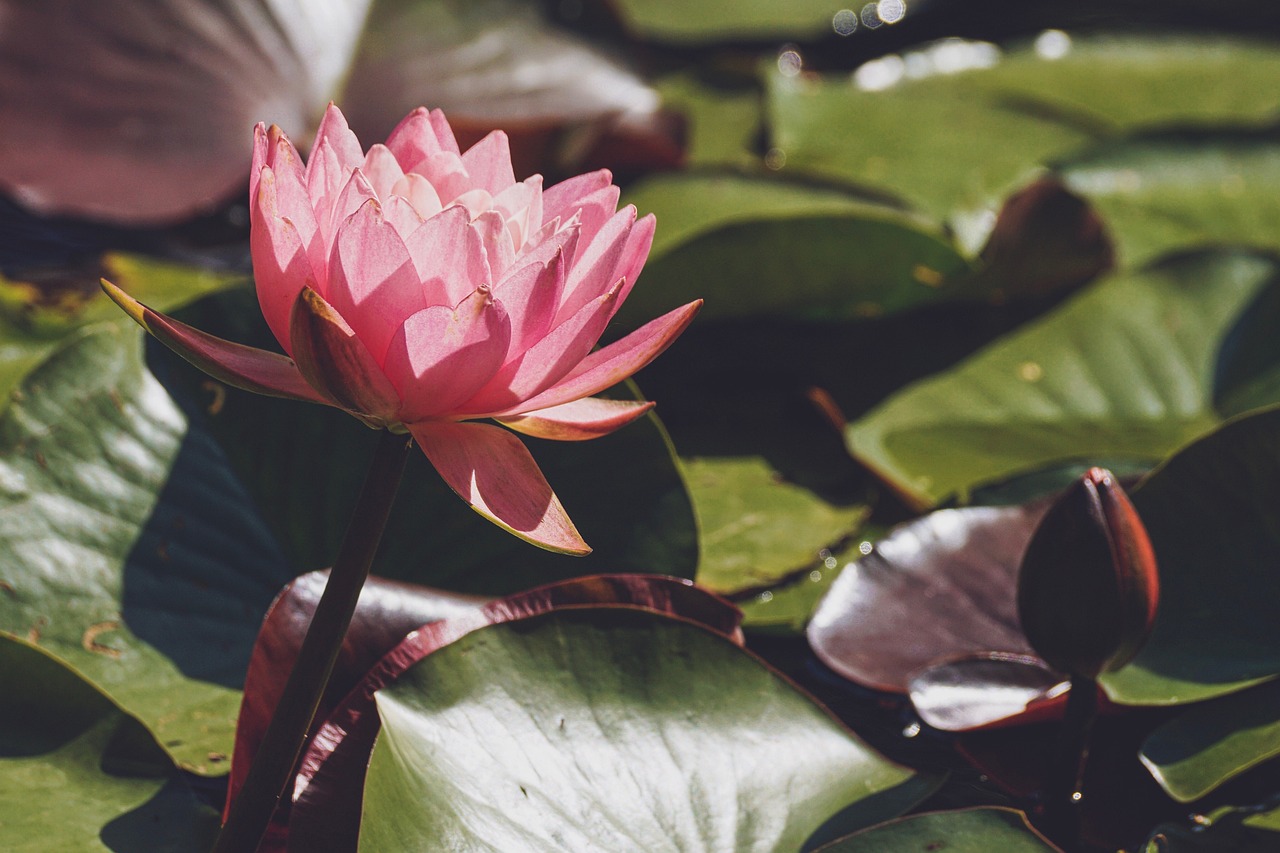
Seasonal Care Tips
When it comes to caring for your Peace Lily, understanding the seasonal changes can make a world of difference. Just like how we adapt our wardrobe with the changing seasons, your Peace Lily requires specific adjustments to thrive throughout the year. Each season brings its own set of challenges and opportunities for growth. Let’s break it down and explore how you can provide the best care for your lovely green companion.
In the winter, Peace Lilies can become a bit sluggish, and it’s essential to maintain a stable environment for them. During this time, the temperatures should ideally range between 65°F to 85°F. Be cautious of cold drafts from windows or doors, as Peace Lilies are sensitive to sudden temperature changes. Additionally, you might notice that the plant requires less water in winter since its growth slows down. A good rule of thumb is to check the top inch of the soil; if it's dry, it’s time to water. To ensure adequate humidity, consider using a humidifier or placing a tray of water near the plant, as indoor heating can dry out the air.
As spring rolls in, it’s time to rejuvenate your Peace Lily! This season is all about growth and renewal. You’ll want to start fertilizing your plant every 4-6 weeks with a balanced fertilizer to encourage lush foliage and beautiful blooms. Spring is also an excellent time for repotting. If your Peace Lily has outgrown its pot, gently remove it and place it in a slightly larger container with fresh potting mix. This will provide the roots with more space to grow and access to new nutrients.
Summer brings warmth and light, which can be a double-edged sword for your plant. While Peace Lilies enjoy bright, indirect sunlight, too much direct sunlight can scorch their leaves. You might want to rotate your plant occasionally to ensure even growth. During this season, keep a close eye on the watering schedule; the warmer temperatures may require you to water more frequently. However, be careful not to overwater, as this can lead to root rot. A simple way to check is by sticking your finger into the soil; if it feels dry an inch down, it’s time to water.
As autumn approaches, it’s time to prepare your Peace Lily for the cooler months ahead. You may notice that the growth begins to slow down again. This is a natural process, and it’s essential to adjust your care accordingly. Reduce the frequency of fertilization, as your plant won't need as many nutrients during this time. It's also a good idea to check for any pests that may have taken residence during the summer months, as they can become more active as temperatures drop.
Throughout the year, always be observant of your Peace Lily’s condition. If you notice any changes in leaf color or texture, it could be a sign that adjustments are needed. Maintaining a consistent care routine, tailored to the seasons, will ensure that your Peace Lily remains healthy and vibrant all year round.
- How often should I water my Peace Lily?
Water your Peace Lily when the top inch of the soil feels dry. In general, this could be once a week, but it may vary depending on the season and humidity levels. - Why are the leaves of my Peace Lily turning yellow?
Yellowing leaves can indicate overwatering, insufficient light, or nutrient deficiency. Check your watering habits and ensure the plant is getting enough light. - Can I propagate my Peace Lily in winter?
While it’s possible to propagate during winter, spring is the best time for propagation as the plant is more likely to thrive with the increase in light and warmth. - What should I do if my Peace Lily stops blooming?
Check for adequate light, water, and nutrients. If it’s not blooming, it may need more fertilizer or a brighter location.

Winter Care
As the temperature drops and winter sets in, your Peace Lily requires some special attention to ensure it continues to thrive. Just like we bundle up in cozy sweaters, these plants need a little extra care to cope with the colder months. First and foremost, make sure to keep your Peace Lily away from cold drafts. Windows, doors, and air vents can create chilly breezes that could stress your plant. Instead, find a nice, warm spot where it can bask in indirect light.
During winter, the amount of natural light diminishes, which can impact your Peace Lily's growth. It's essential to monitor its exposure to light and, if necessary, consider moving it closer to a window that gets some gentle sunlight. However, be cautious about placing it in direct sunlight, as this can lead to leaf burn—a fate no plant wants to face! If you notice the leaves starting to curl or turn yellow, it might be your plant's way of saying it needs a bit more light or a break from the harsh conditions.
Watering is another crucial aspect of winter care. While it might be tempting to water less frequently due to the plant's reduced growth rate, it’s important to strike a balance. Overwatering can lead to root rot, especially in the winter when the plant's growth slows down. A good rule of thumb is to check the top inch of the soil; if it's dry, it's time to water. Always ensure that excess water can drain away, as stagnant water can be detrimental to your Peace Lily's health.
Humidity levels also play a significant role in the well-being of your Peace Lily during winter. Indoor heating can dry out the air, which may not be ideal for your plant. To combat this, consider placing a humidifier nearby or grouping your Peace Lily with other plants to create a more humid microclimate. Alternatively, you can place a tray filled with water and pebbles beneath the pot to increase humidity levels without overwatering the roots.
Lastly, don’t forget about fertilization. During winter, your Peace Lily will enter a dormant phase, meaning it won't require as much food. In fact, it's best to hold off on fertilizing until spring when the plant starts to wake up and show signs of new growth. When spring arrives, you can resume a regular fertilization schedule to give your Peace Lily the boost it needs to flourish.
In summary, winter care for your Peace Lily involves:
- Keeping it away from cold drafts
- Monitoring light exposure and adjusting as necessary
- Watering based on soil moisture
- Maintaining humidity levels
- Halting fertilization until spring
By following these tips, you can ensure that your Peace Lily not only survives the winter but comes out ready to thrive as the days grow longer and warmer.
Q: Can I keep my Peace Lily in a bathroom during winter?
A: Yes, if your bathroom has sufficient indirect light and humidity, it's an excellent spot for your Peace Lily during the winter.
Q: How often should I check the soil moisture in winter?
A: It's best to check the top inch of soil weekly. If it feels dry, it's time to water. Just be careful not to overwater.
Q: What should I do if my Peace Lily's leaves turn yellow in winter?
A: Yellow leaves can indicate a few issues, including overwatering or insufficient light. Assess the conditions and adjust accordingly.
Q: Is it normal for my Peace Lily to stop blooming in winter?
A: Yes, it's completely normal for Peace Lilies to enter a dormant phase during winter, leading to fewer blooms. They typically resume blooming in spring.

Spring Growth Strategies
As the days grow longer and the temperatures begin to rise, spring is the perfect time to give your Peace Lily the boost it needs to thrive. Just like we feel invigorated after a long winter, your plant craves that extra attention to shake off the winter blues. So, how do you ensure your Peace Lily is ready to burst into life this season? Let’s dive into some effective strategies!
First off, repotting is often a necessary step as your Peace Lily begins to awaken from its dormancy. If you notice that your plant has outgrown its pot, it’s time to give it some room to spread its roots. Choose a pot that is 1-2 inches larger in diameter than the current one, and make sure it has good drainage holes. This will prevent water from pooling at the bottom, which can lead to root rot. When repotting, use a high-quality potting mix that retains moisture but also drains well, allowing your Peace Lily to absorb nutrients effectively.
Next, consider fertilization. Spring is the ideal time to start feeding your Peace Lily again after a winter break. Use a balanced, water-soluble fertilizer every 4-6 weeks to provide essential nutrients that support new growth. However, be careful not to over-fertilize, as this can lead to leaf burn. Remember, a little goes a long way! Diluting the fertilizer to half the recommended strength can be a safe approach, especially for those sensitive plants.
Another important aspect of spring care is increasing light exposure. As the sun starts to shine brighter, it’s crucial to find the right balance for your Peace Lily. While they thrive in indirect light, consider moving them closer to a window that receives filtered sunlight. Just be cautious of direct rays, as they can scorch the beautiful leaves. If you notice the leaves starting to curl or turn yellow, it might be a sign that your plant is getting too much sun.
Lastly, don’t forget about humidity. Peace Lilies adore a humid environment, and spring is often drier than winter due to heating systems being turned off. You can increase humidity around your plant by misting it regularly or placing a humidifier nearby. Another great trick is to set your Peace Lily pot on a tray filled with pebbles and water, ensuring the bottom of the pot doesn’t sit directly in the water. This creates a microenvironment with increased humidity, encouraging lush growth.
In summary, spring is a time of rejuvenation, and your Peace Lily will thrive with the right care. By repotting, fertilizing, adjusting light exposure, and maintaining humidity, you’ll set the stage for vibrant blooms and healthy foliage. Remember, a little love and attention can go a long way in helping your Peace Lily flourish!
- How often should I water my Peace Lily in spring?
Water your Peace Lily when the top inch of soil feels dry. This could mean watering once a week or more, depending on your home’s humidity and temperature. - Can I propagate my Peace Lily in spring?
Yes! Spring is an excellent time for propagation. You can divide mature plants or propagate through water to create new plants. - What should I do if my Peace Lily isn’t blooming?
Ensure it’s getting enough light and nutrients. Sometimes, a little extra care during spring can encourage those beautiful white blooms to appear!
Frequently Asked Questions
- What are the ideal light conditions for Peace Lily plants?
Peace Lilies thrive in indirect sunlight. They prefer bright, filtered light but can adapt to low-light conditions. However, too much direct sunlight can scorch their leaves, so it's best to avoid placing them in harsh sunlight.
- How often should I water my Peace Lily?
Watering your Peace Lily once a week is generally sufficient, but it’s crucial to check the soil moisture first. If the top inch of soil feels dry, it’s time to water. Overwatering can lead to root rot, so make sure the pot has good drainage.
- What type of fertilizer is best for Peace Lily plants?
A balanced, water-soluble fertilizer is ideal for Peace Lilies. Look for a fertilizer with equal parts of nitrogen, phosphorus, and potassium. Fertilize every 6-8 weeks during the growing season for optimal health.
- How can I tell if my Peace Lily is not getting enough light?
Signs of insufficient light include slow growth, fewer blooms, and leaves that appear dark green and droopy. If you notice these signs, consider moving your plant to a brighter location.
- What should I do if my Peace Lily has yellowing leaves?
Yellowing leaves can indicate overwatering, underwatering, or nutrient deficiency. Check the soil moisture and adjust your watering schedule accordingly. If the soil is too dry, water it thoroughly; if it’s too wet, let it dry out before watering again.
- Can Peace Lilies survive in low-light conditions?
Yes, Peace Lilies can adapt to low-light environments and still bloom, making them perfect for indoor settings. However, they won’t flower as abundantly as they would in brighter light.
- What pests should I look out for on my Peace Lily?
Common pests include spider mites, aphids, and mealybugs. Regularly inspect the leaves for any signs of infestation and treat them promptly with insecticidal soap or neem oil.
- How do I propagate my Peace Lily?
You can propagate Peace Lilies through division or water propagation. For division, carefully separate the roots of a mature plant and replant them in new pots. For water propagation, cut a healthy leaf and place it in water until roots develop.
- What special care do Peace Lilies need in winter?
During winter, Peace Lilies require less water and should be kept in a warm environment, away from drafts. Ensure they still receive adequate light, but avoid placing them near cold windows.



















